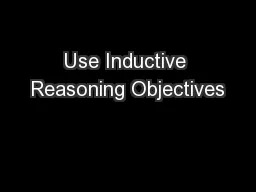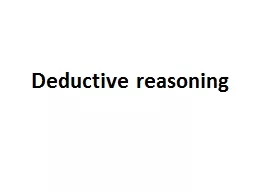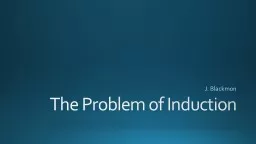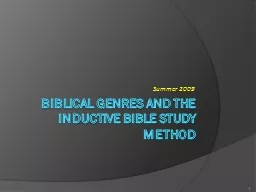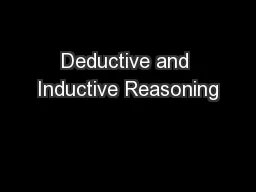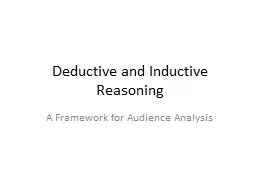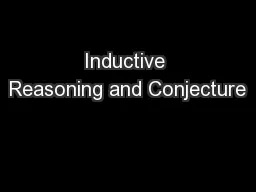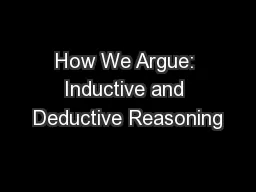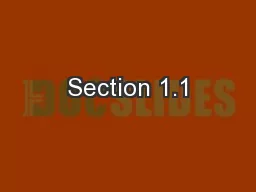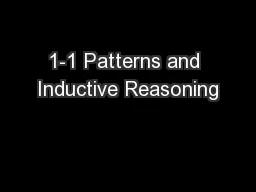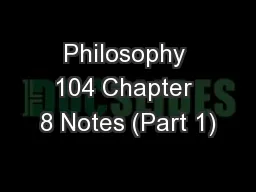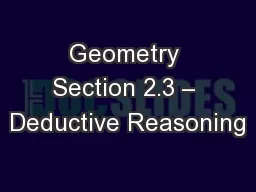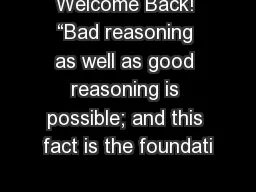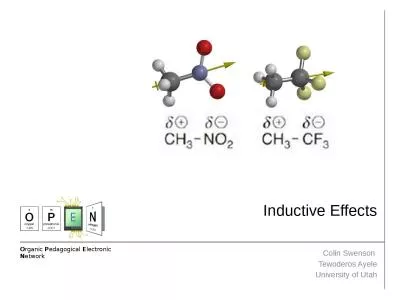PPT-Use Inductive Reasoning Objectives
Author : giovanna-bartolotta | Published Date : 2018-11-02
To form conjectures through inductive reasoning To disprove a conjecture with a counterexample To avoid fallacies of inductive reasoning Example 1 Youre at school
Presentation Embed Code
Download Presentation
Download Presentation The PPT/PDF document "Use Inductive Reasoning Objectives" is the property of its rightful owner. Permission is granted to download and print the materials on this website for personal, non-commercial use only, and to display it on your personal computer provided you do not modify the materials and that you retain all copyright notices contained in the materials. By downloading content from our website, you accept the terms of this agreement.
Use Inductive Reasoning Objectives: Transcript
Download Rules Of Document
"Use Inductive Reasoning Objectives"The content belongs to its owner. You may download and print it for personal use, without modification, and keep all copyright notices. By downloading, you agree to these terms.
Related Documents

